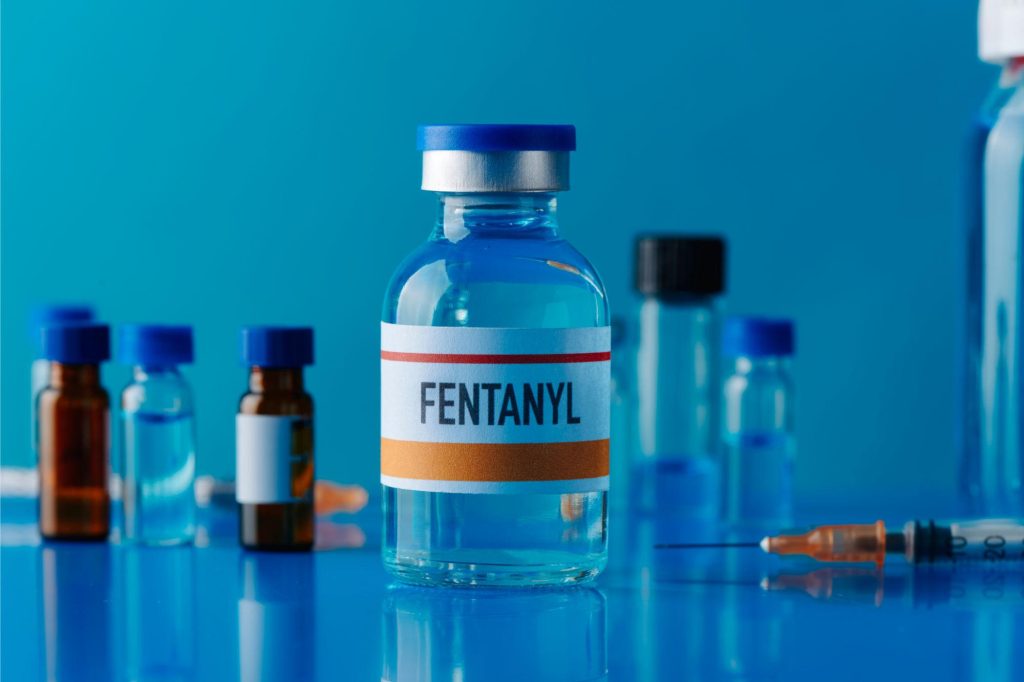The New Face of the Drug Epidemic in the United States
By: Jimmy Heider on February 2025

Anywhere you walk within Minneapolis or St. Paul, you can find evidence of America’s opioid epidemic just below your feet. From burnt tin foil to used needles, the Twin Cities are not any different from other metropolitan areas around the country suffering from this same affliction. Synthetic opioids, specifically fentanyl being the most popular, have replaced heroin as the opiate of choice for most addicts due to its cheaper cost and easy accessibility. Most addicts say that pure heroin and real pills such as Percocet have gone with the wind on the streets, telling me you’re a fool if you think what you’re buying isn’t laced with fentanyl.
Opiates are a type of drug that brings pain relief to the user by binding to the opioid receptor within the brain. Naturally occurring in the poppy plant, opium is produced from the seeds and then processed into a variety of opiates. The most popular opiate throughout history has been heroin but has been replaced by synthetic pills over the last three decades by painkillers such as oxycodone, oxycontin, and hydrocodone. However, there’s one pain pill that has become the most popular over the last 12 years, and that’s fentanyl.
Fentanyl was originally prescribed as a painkiller for those dealing with terminal illnesses such as cancer and for those recovering from surgery. Fentanyl is said to be 50 times stronger than heroin, 100 times more potent than morphine, and has quickly turned into the most abused opiate in America due to its potency and cheap cost. Its meteoric rise can be traced back to the early 2010’s when it started becoming popular on the street. The number of deaths from fentanyl overdose has steadily increased from 2013 onwards, and according to the CDC, there were 3,105 deaths from fentanyl overdose in 2013, to a staggering 73,838 deaths in 2022.
Preliminary data from the Minnesota Department of Health shows that there were 947 deaths from opioid related causes in 2023, decreasing from 1,031 in 2022. Meanwhile, non-fatal overdoses increased slightly, about 1% from 5,141 non-fatal overdoses in 2022 to 5,178 in 2023. A factor for the increase in non-fatal overdoses and the decrease in deaths could be attributed to the additional funding from the state of Minnesota to combat the epidemic. Minnesota has allotted $200 million from their budget to go towards prevention, harm reduction, treatment, and recovery services, with $50 million going to the Minnesota Department of Health alone. In the funding that was passed, the state requires all schools, law enforcement agencies, emergency responders, and treatment facilities to have Narcan available at all times. Naloxone, the active ingredient in Narcan, is a drug that can revert opiate overdoses and its symptoms by binding with the same receptors in the brain as opiates do.
The number of synthetic opioid overdoses increased from 11% from 4,328 in 2022 to 4,819 in 2023 in Minnesota. The amount of heroin overdoses decreased from 813 in 2022 to 359 in 2023, a 56% change, further reinstating the belief that fentanyl has taken over as the drug of choice for opiate users. The cheap cost of manufacturing fentanyl and easier transportation are some of the main factors behind this drastic change, but this has been the trend nationwide and locally for over a decade now. Mind you, these statistics are only from official death certificates and official hospital records around the state, these numbers don’t include the number of overdoses that have occurred on the streets or in homes, and in reality, I think these numbers are much higher than the official data.
The opiate crisis affects all walks of life and all demographics; from rural counties to the metropolitan area, from the wealthy to the poor, and from the homeless to the “functioning” addict. A common misconception surrounding opiate addicts is that they can’t contribute to society, and they are homeless fiends scouring the street for a score. This is not always the case; a functional fentanyl addict is more common than you may think. I recently interviewed a good friend of mine who recently checked himself into rehab for his fentanyl addiction. In his case, and for most people, it starts with a habit of painkillers, and as he says, “In the beginning I was just taking real Percocet pills, but I found I could make 1-2 fake pills [fentanyl] last a good couple days by doing little bits and mixing them with my real [prescribed] Percocet”. At the time he was a college student taking classes, working as a painter, and as a delivery driver at night. Opiate addiction ramps up as you gain a tolerance and “After I’d been doing Percocet for a while, I’d rarely ever feel that true relaxed euphoria of an opiate high.” Eventually, he craved something stronger, which is when he moved on from Percocet and started seeking out pure fentanyl. “Fentanyl gave me that euphoric high, but it wears off way quicker. The half-life is shorter, so you wind up doing it more often, which of course makes your tolerance go up faster.” At the height of his addiction, he found himself taking around 20 fake fentanyl pills a day.
The opiate epidemic is an issue that affects the entire nation and every demographic, and it does not discriminate. Fentanyl specifically causes the most harm, and it’s important for Americans to know and understand the damage it causes to the individual and to the loved ones around them. With increased knowledge of the problem, access to harm reduction methods like Narcan, and understanding the cause of why someone could possibly get addicted to such a substance, Americans can change their perspective on the opiate crisis, and we can combat this epidemic together.
If you or anyone you know is struggling with addiction, don’t wait, get help now!
